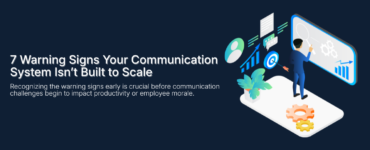In today’s competitive market, exceptional customer service is essential, but it doesn’t have to break the bank. Many businesses struggle with increasing support costs without necessarily improving customer satisfaction. The good news? There are proven strategies to reduce customer service costs while maintaining, or even enhancing, service quality.
Below are 10 effective ways to streamline your support operations and reduce expenses without compromising the customer experience.
1. Invest in Self-Service Options
One of the most cost-effective ways to reduce customer service costs is by empowering customers to help themselves. Create a comprehensive knowledge base, FAQs, video tutorials, and how-to guides that are easy to find and use.
Self-service tools not only reduce the volume of support requests but also satisfy customers who prefer solving problems on their own.
Pro tip: Keep your self-service content updated regularly based on common ticket trends.
2. Implement AI-Powered Chatbots
AI-driven chatbots can handle a wide range of customer queries instantly, 24/7. They significantly reduce the workload on human agents by resolving common issues such as order tracking, password resets, or basic troubleshooting.
Chatbots help you cut customer service costs by decreasing the need for a large support staff, especially during off-hours.
Bonus: Advanced bots can escalate complex issues to human agents when necessary, ensuring a seamless experience.
3. Optimize First Contact Resolution (FCR)
Improving your First Contact Resolution rate reduces the number of interactions per customer issue. The fewer times a customer has to contact you, the lower your support costs.
Train your team to resolve issues completely in the first interaction. Equip them with the tools, authority, and information they need to act decisively.
4. Outsource Strategically
Outsourcing customer support can be a smart move—if done right. Look for reputable partners who offer quality support at a lower cost, especially in regions with lower labor rates.
However, don’t sacrifice quality for savings. Choose vendors with strong language skills, a good understanding of your brand, and proper training programs in place.
5. Leverage Automation Tools
Automation isn’t just for chatbots. You can automate ticket routing, follow-up emails, satisfaction surveys, and internal notifications. These tools help streamline your support process and minimize human error, saving both time and money.
By automating repetitive tasks, you free up your agents to focus on more complex and high-value customer interactions.
6. Offer Omnichannel Support Wisely
While it’s tempting to offer support across every platform (phone, email, chat, social media, etc.), not all channels provide equal value. Identify where your customers prefer to engage and concentrate resources there.
Focusing on your most effective channels helps reduce customer service costs without impacting availability or customer satisfaction.
7. Cross-Train Your Customer Support Staff
Cross-training your agents across different areas of support increases their versatility. Instead of needing specialists for every task, a well-rounded team can handle a broader range of queries.
This flexibility allows for more efficient scheduling and reduces downtime or the need to hire extra staff during busy periods.
8. Monitor and Analyze Key Metrics
Data is your best friend when optimizing customer service operations. Track metrics like average resolution time, cost per contact, and customer satisfaction (CSAT).
Use these insights to identify inefficiencies, bottlenecks, or training needs. Continual performance monitoring allows for strategic adjustments that can significantly cut customer service costs over time.
9. Encourage Customer Feedback and Continuous Improvement
Actively seek feedback to learn what’s working and what isn’t. Customers can often point out inefficiencies or recurring issues that your team might miss.
Use surveys, post-interaction ratings, or social media listening tools to gather insights. Applying this feedback to improve processes reduces repeat contacts and boosts efficiency.
10. Integrate CRM and Support Platforms
Disjointed systems lead to delays, confusion, and repetitive tasks. Integrating your Customer Relationship Management (CRM) software with your support platforms ensures all customer information is centralized and accessible.
A unified system helps your agents provide faster and more accurate support, which in turn helps reduce customer service costs by shortening interactions and improving first-time resolutions.
Final Thoughts
Cutting customer service expenses doesn’t mean sacrificing quality. In fact, many cost-saving measures—like automation, self-service, and efficient training—can enhance the customer experience.
The key to successfully reducing customer service costs lies in smart investments and process improvements. By focusing on scalable and customer-centric strategies, your business can stay competitive, efficient, and trusted by your customers.




